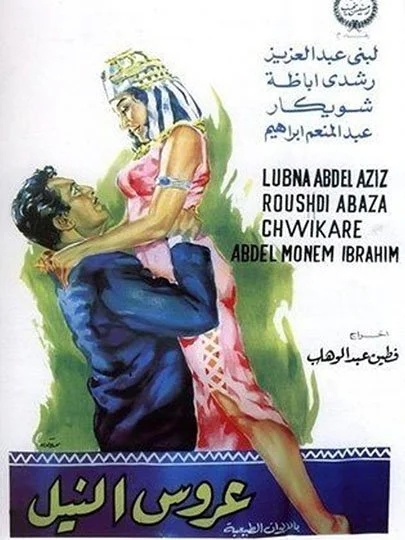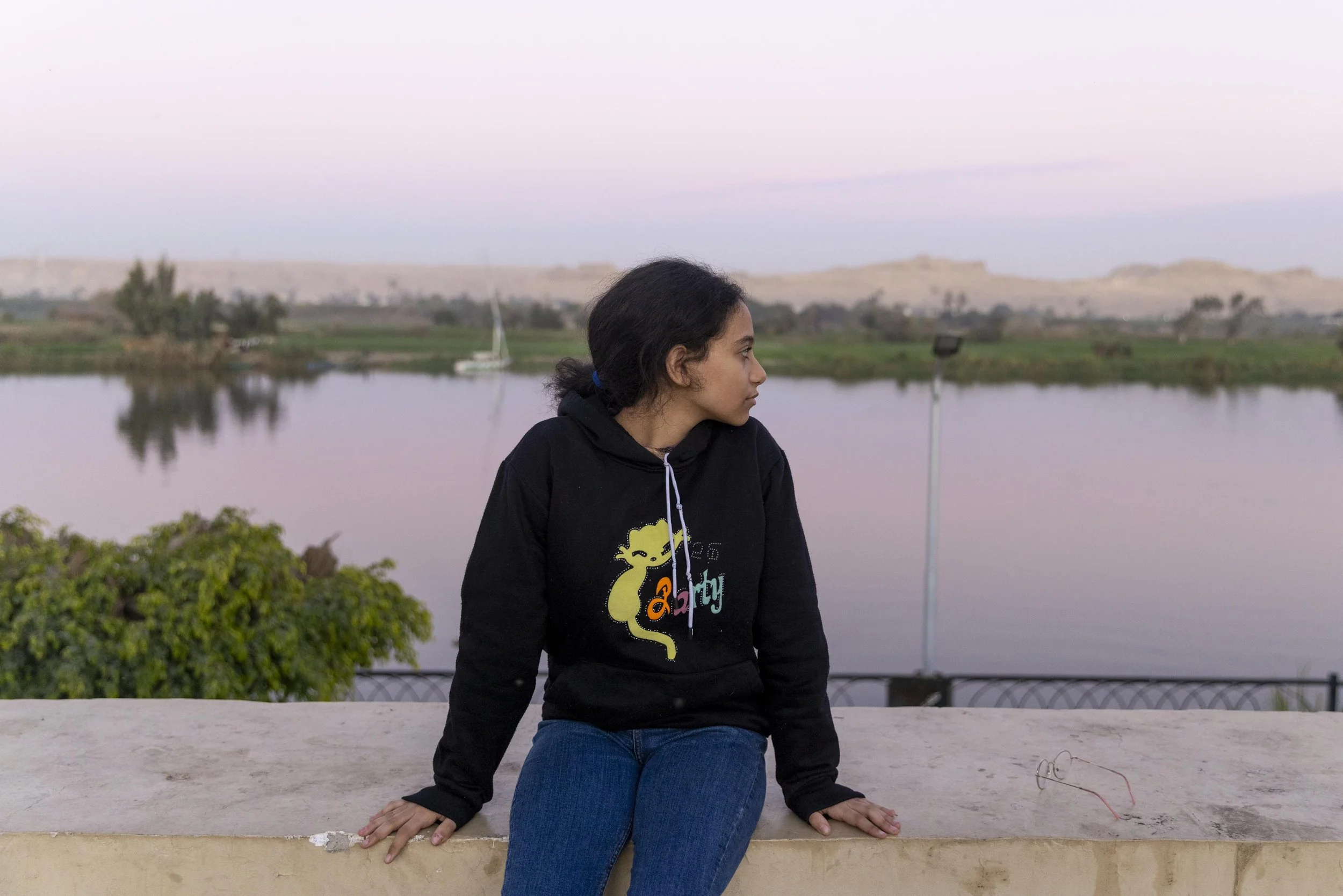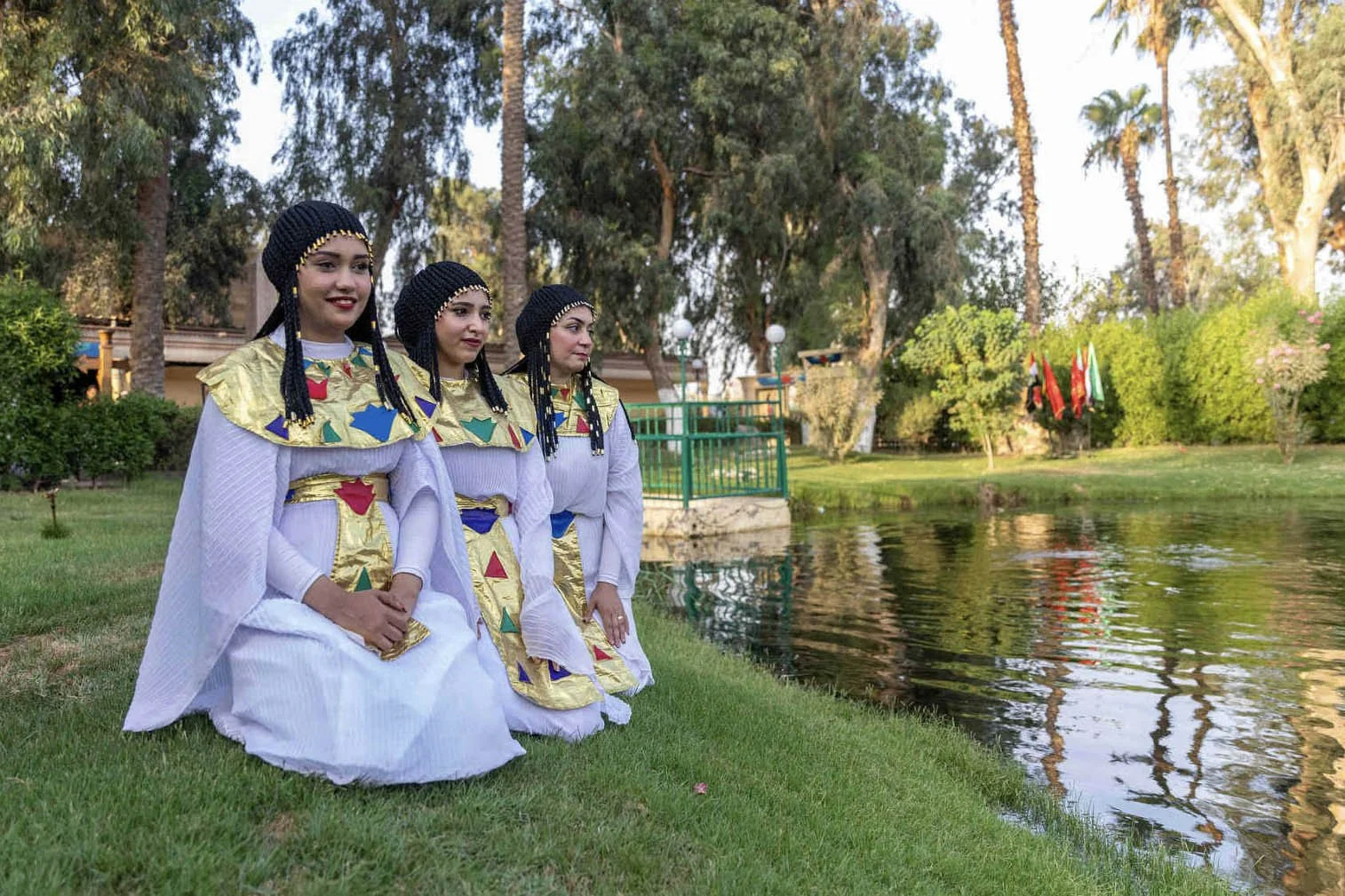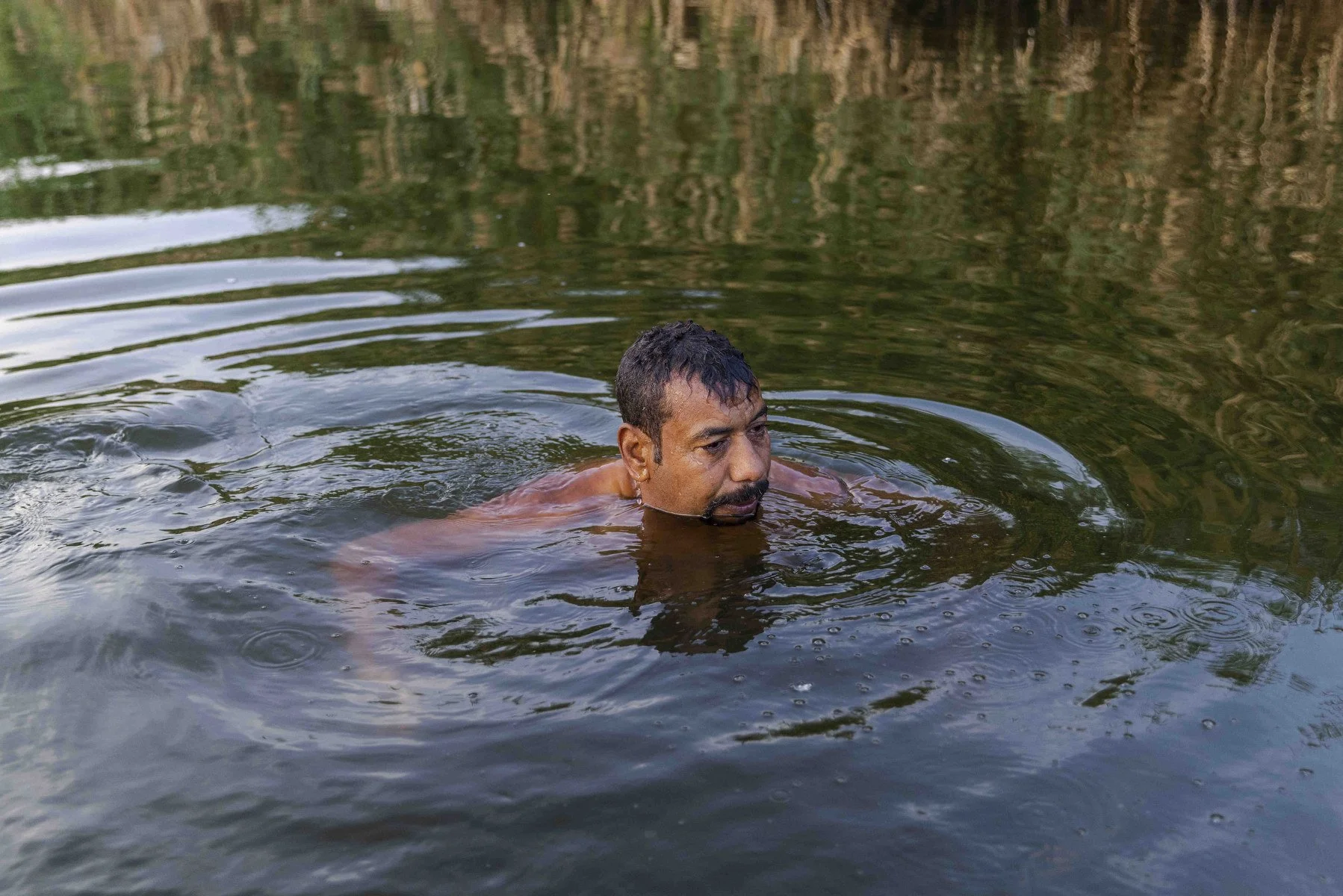
Where is the Bride of the Nile?
Chapter 2 / 2022 - 2024
During my journey along the Nile in Egypt, I found it essential to visit Aswan, which marks the starting point of the Nile in Egypt and is home to the High Dam. While there, I visited the Nile Museum and saw the "Bride of the Nile" mannequin, as pictured above, which I initially found rather unattractive and wondered why it was included in a museum that attracts tourists, students, and Egyptians alike.
The ancient myth of the "Bride of the Nile" is about a beautiful bride chosen each year to be sacrificed to the god Hapi of the Nile to ask for the floods to come. this myth continued to be present in the collective memory of many Egyptians in different forms, from cinema to books to songs.
Visitor: "Who is this? Is this the Bride of the Nile?"
Friend: "It's a representation in the Nile Museum here in Aswan."
Visitor: laughing, "A fairy tale, right? It can't be real! Who would throw his daughter and sacrifice her to the Nile?" While recording with her phone.
Visitor: "Ah, yes, there is some writing here. But that's alot of reading." She then moves to another part of the Nile Museum in Aswan.
A small conversation from a video showcasing the Nile Museum on YouTube.
“The Bride of the Nile” Film Poster, 1963
The Bride of The Nile
A movie that all my generation and older generations know of is The Bride of the Nile (A'rooset El Nil), produced in 1963. the story unfolds as oil engineer Sami starts digging for oil in an Ancient Egyptian temple in Luxor, disturbing the spirits of the ancient Egyptians buried beneath the ground. The spirits send him the last Bride of the Nile, Hamees (Lobna Abdel Aziz), to halt his actions. She appears as a ghost and communicates with him to deter him from further excavation, sparking a love story between them.
In one scene, while standing on Sami's balcony overlooking the Nile in Cairo, they witness a grand ceremony (Nile Parade) on the river. Hamees asks about the event:
Hamees (Bride of the Nile): "What’s happening?"
Sami: "This is the celebration of the Flooding of the Nile (Wafaa El-Nil)."
Hamees (Bride of the Nile): "What do they do in it?"
Sami: "It’s a celebration where they throw a Bride into the Nile as a sacrifice."
Hamees (Bride of the Nile): "But I’m the last Bride of the Nile."
Sami: "Don’t be angry; they are just throwing a statue, not a real bride."
Hamees (Bride of the Nile): In an astonished and shocked manner "Statue?"
They continue to observe performers in ancient Egyptian clothing, large boats, and music on the Nile. Shortly after, with a sombre expression
Hamees (Bride of the Nile): "Is it really the celebration of the Flooding of the Nile (Wafaa El-Nil)?"
Sami: "Yes, something humble with the resources we have."
Hamees (Bride of the Nile): "Let me show you the real celebration of the Nile."
With eagerness, she steps away from him and begins to disappear like a ghost again, and Sami, in real shock, looks from the balcony to find her by the Nile with a real pharaoh amid a grand performance. They descend toward the Nile in a sacred manner until she reaches the edge of the riverbank. The music stops, and she looks to the Pharaoh, who nods in approval. She jumps into the Nile, and the music resumes ceremonially, while Sami shouts from his balcony, imploring her to return.
A sequence from “ The Bride of the Nile” movie 1963
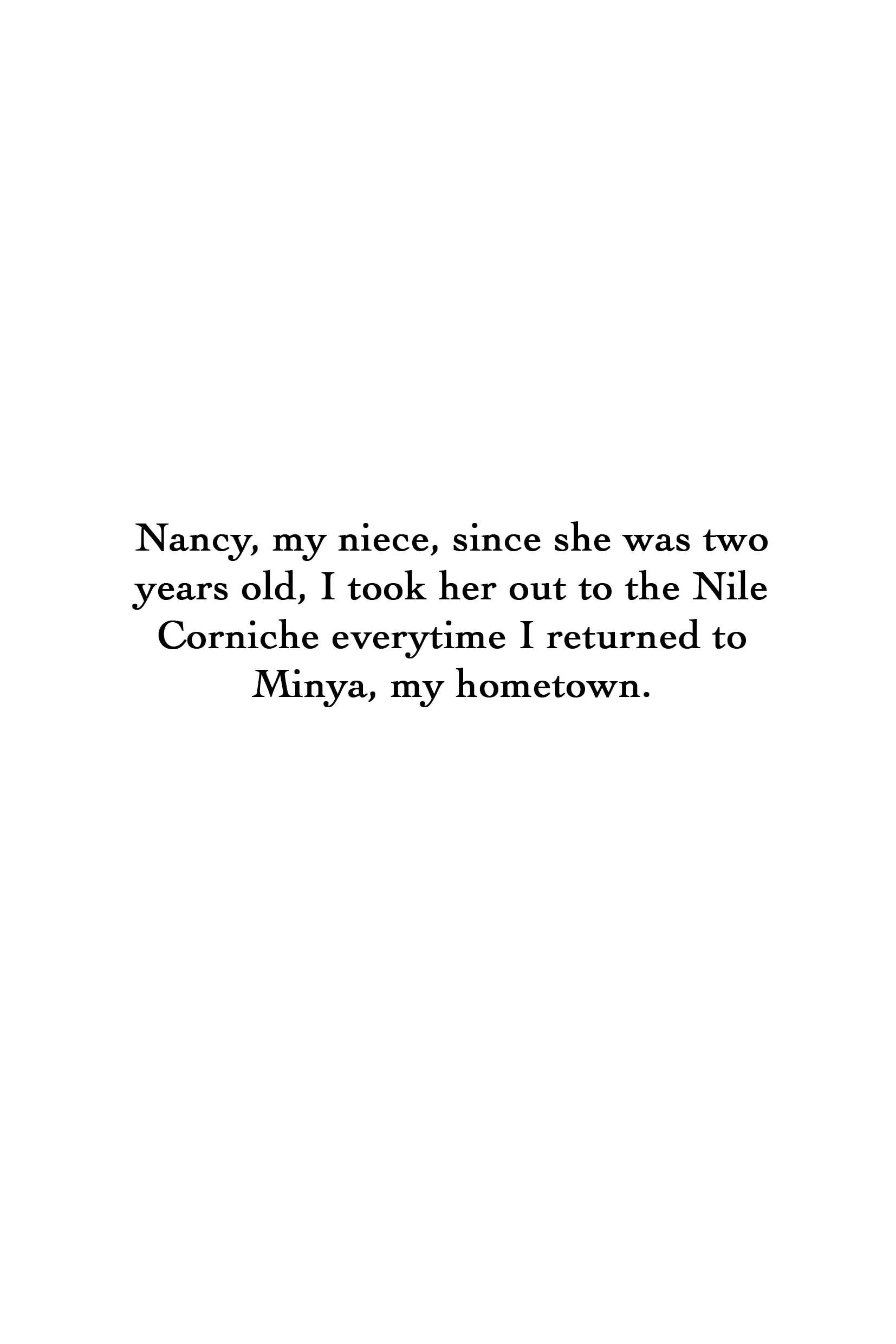
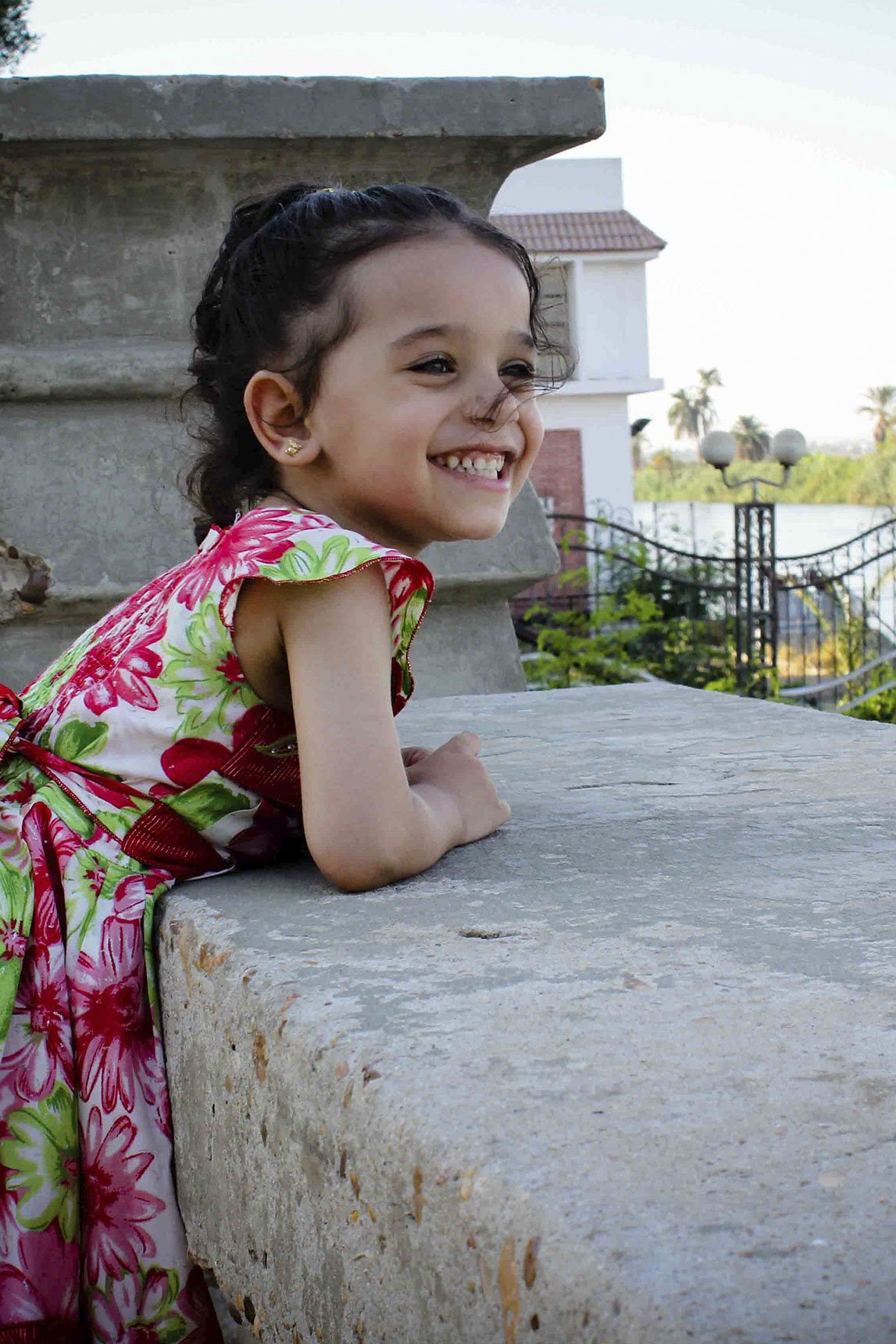

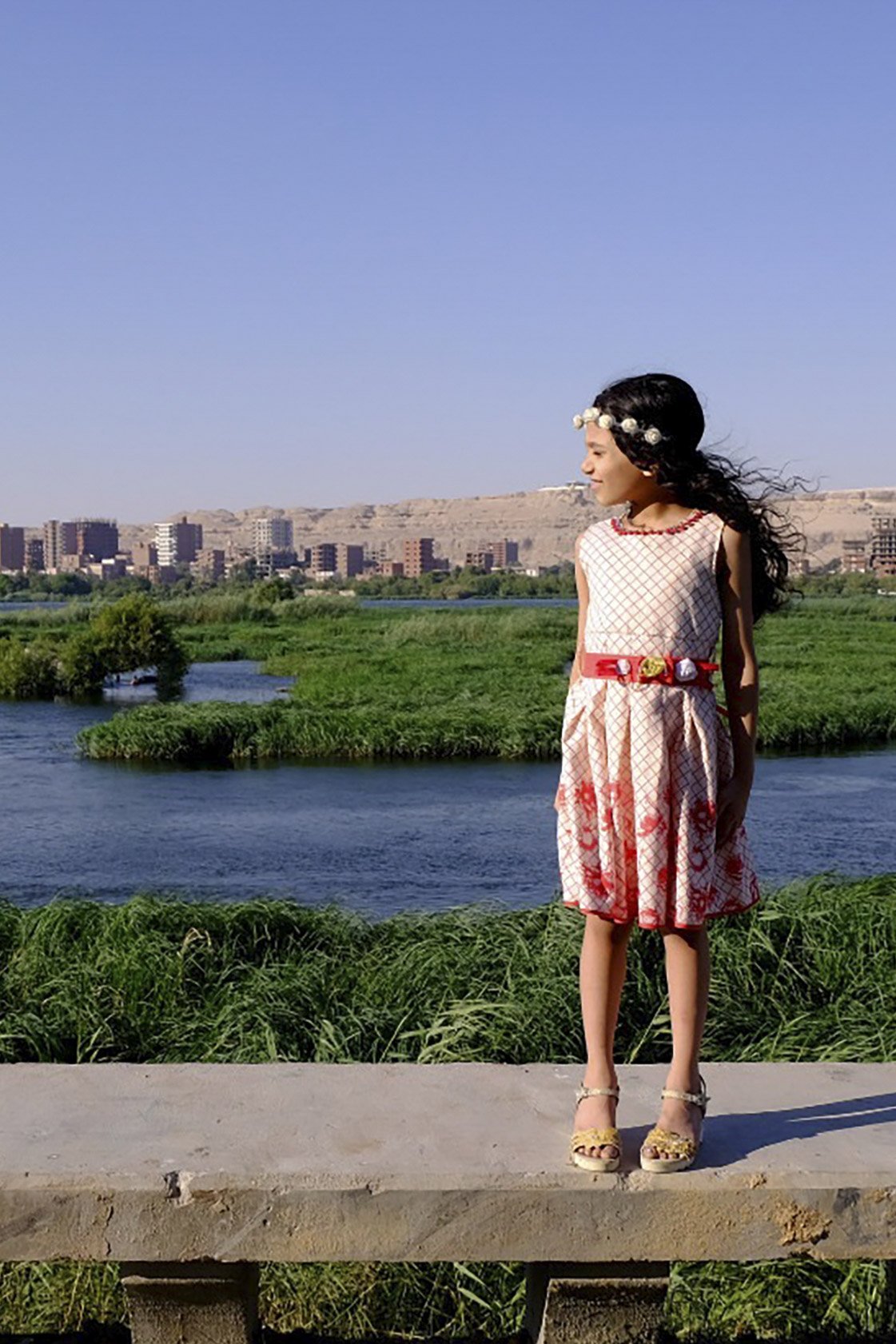
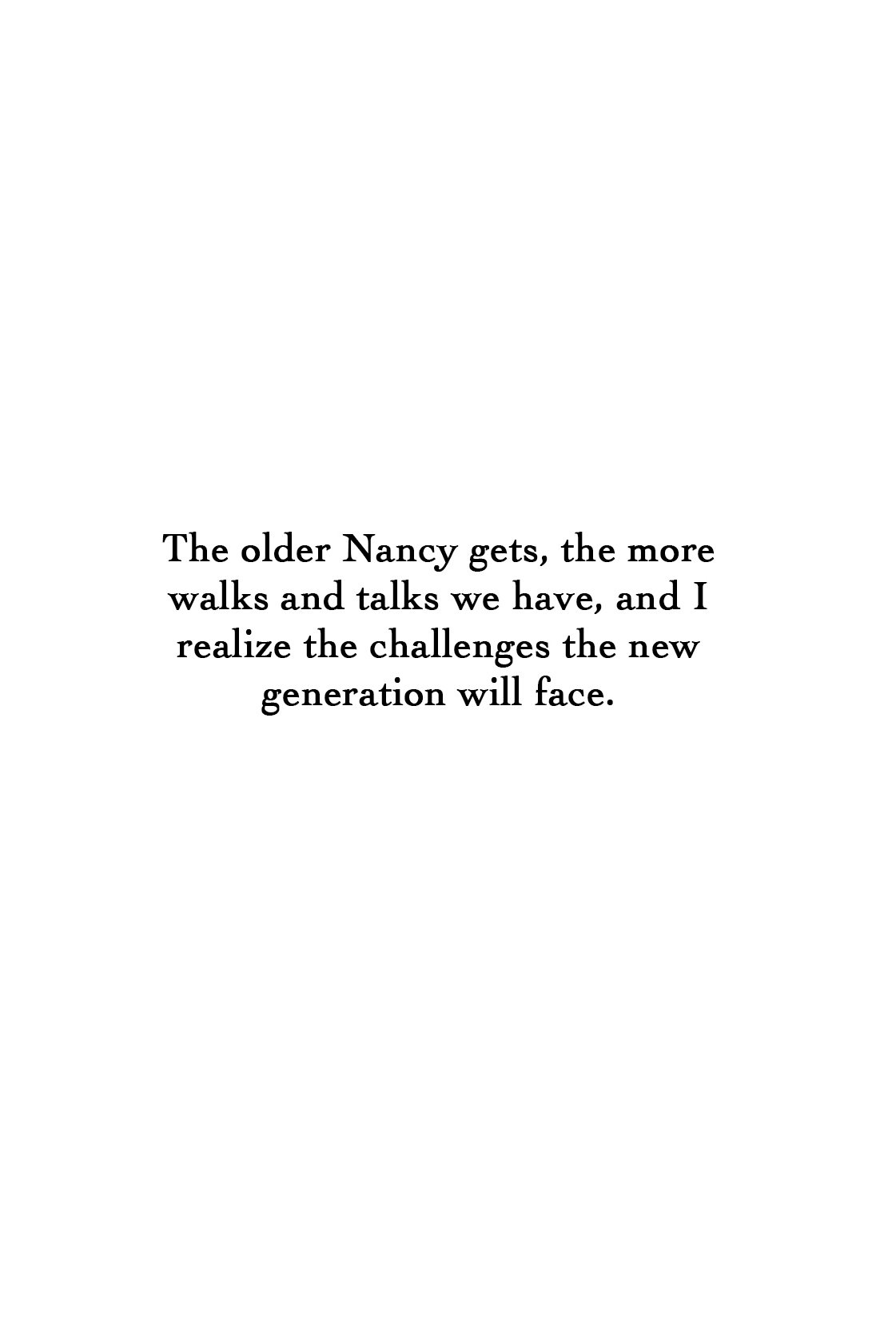
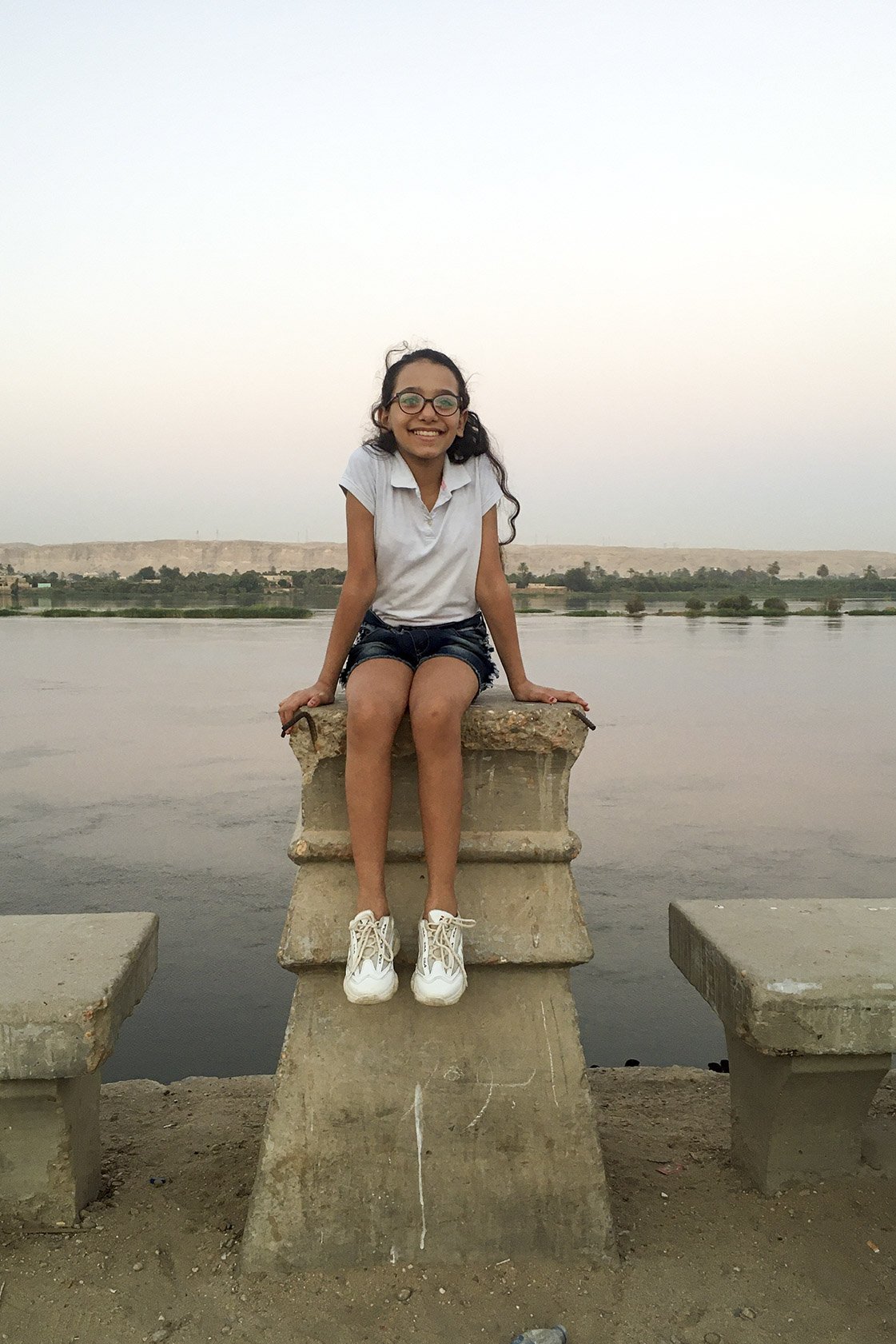
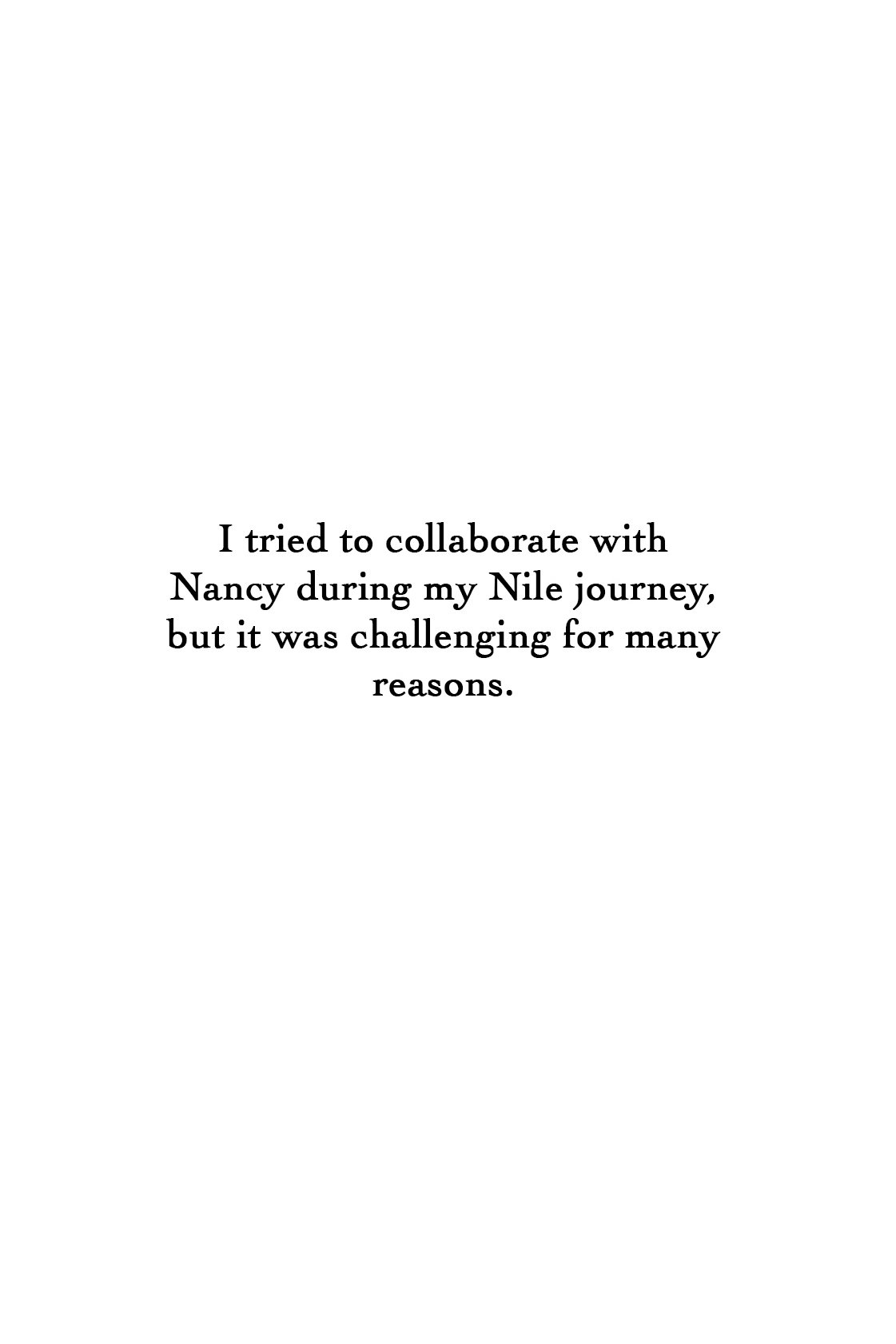
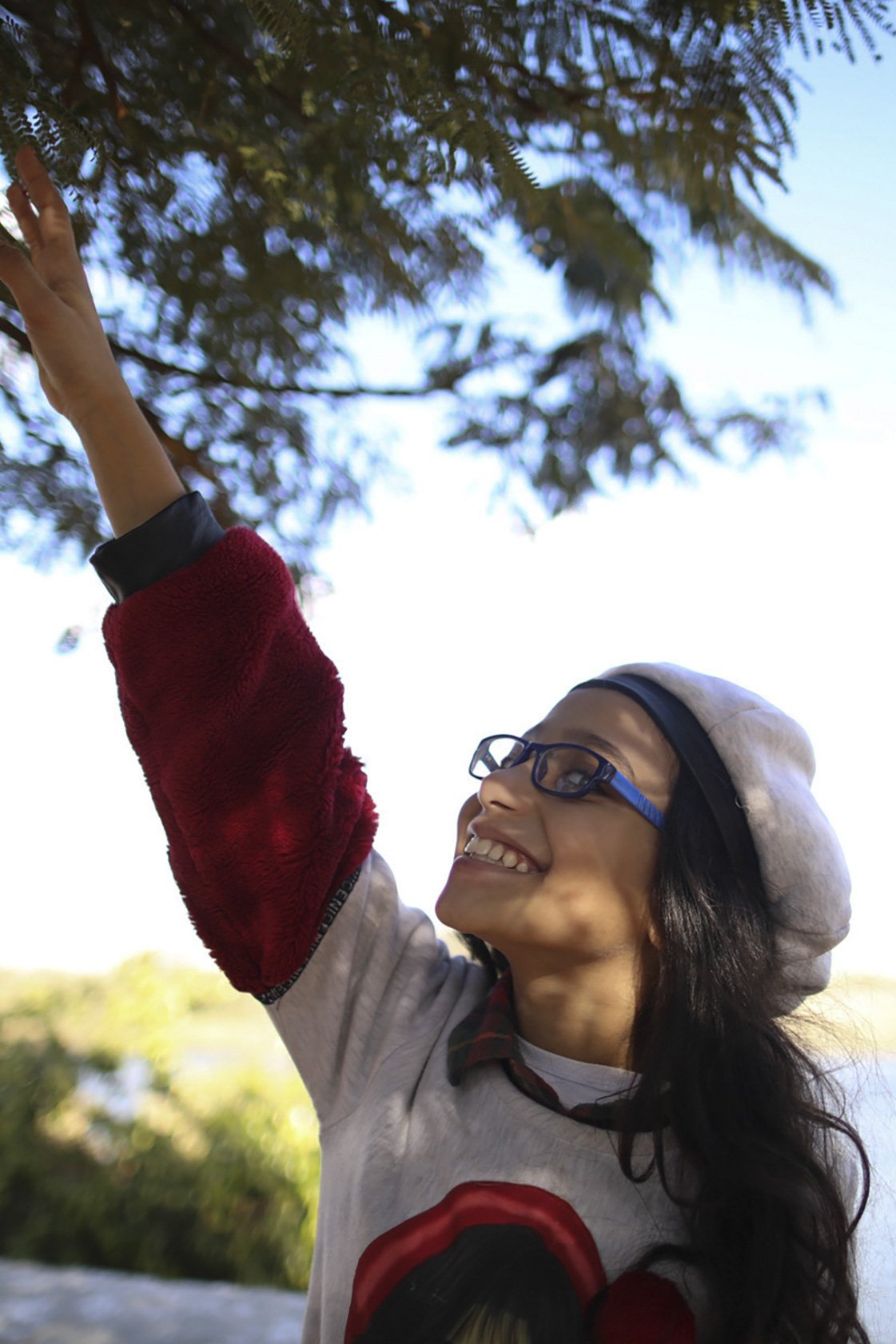

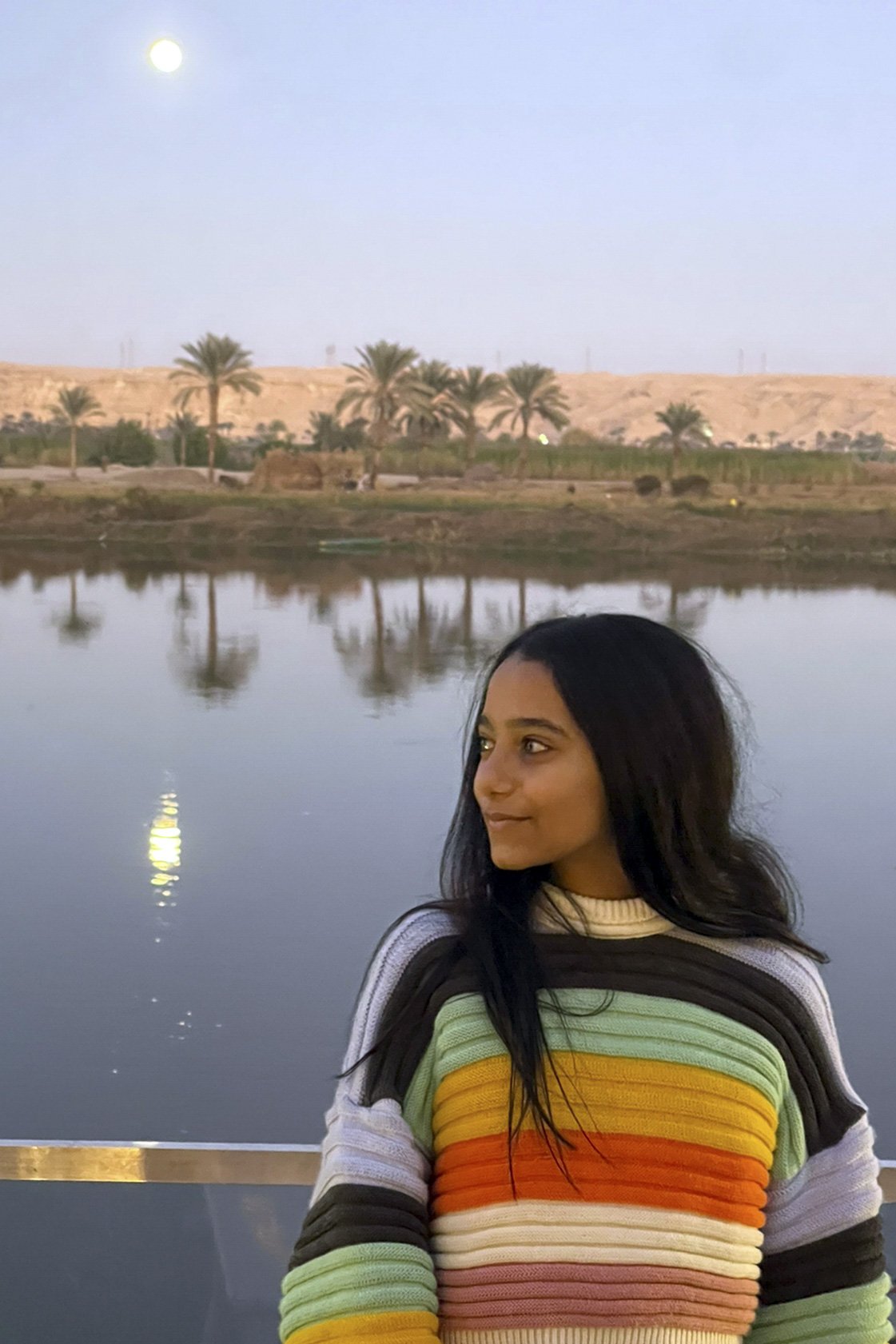

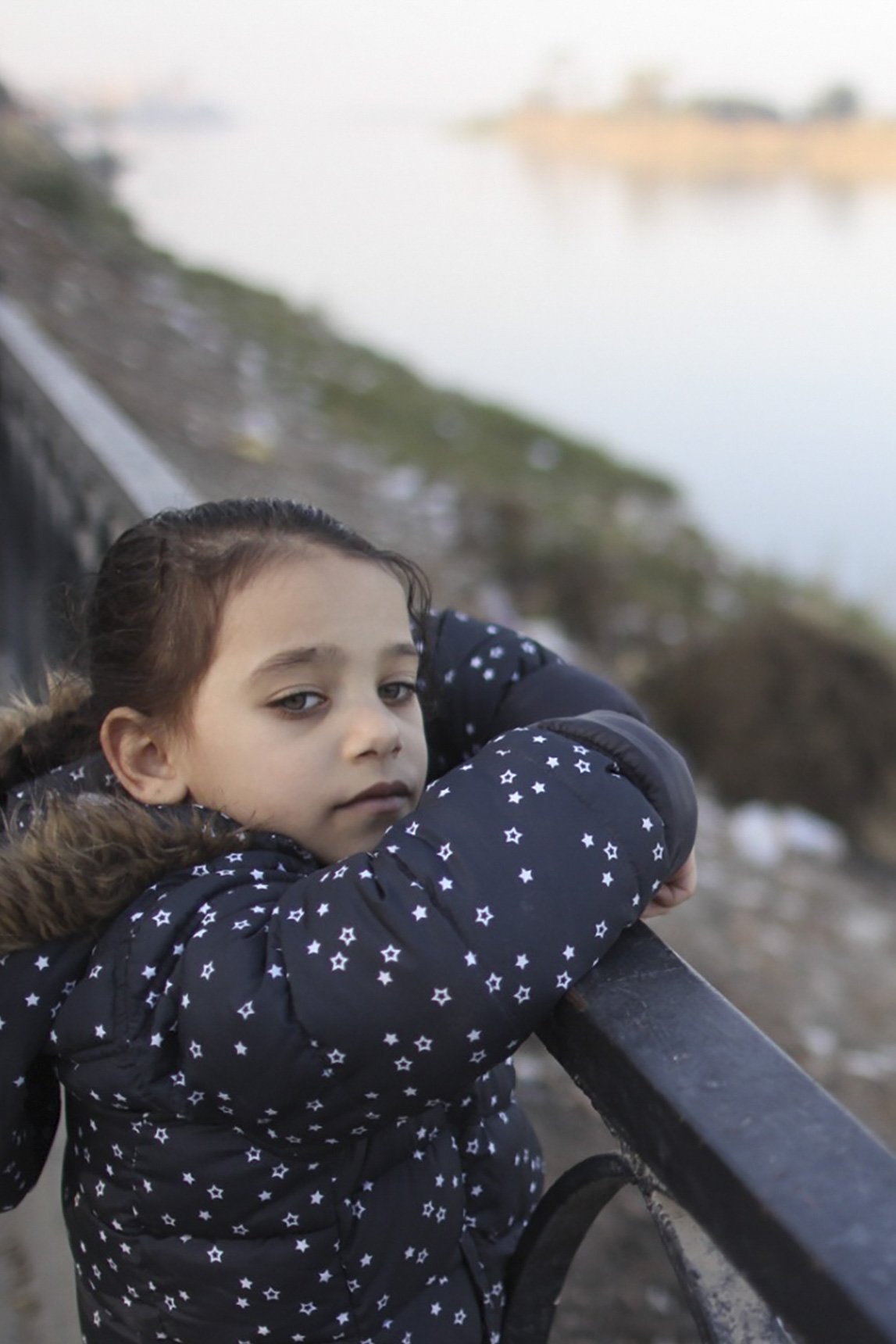
But..Where is the Bride of the Nile?
I asked Nancy.
“There is no Bride of the Nile now, but if the Bride of the Nile existed, I would imagine her as a beautiful, blonde-haired girl in a dress full of flowers sitting on a boat in the middle of the Nile with a magical stick that could immediately clean the Nile from any pollution if it touched it,”
The Pharonic Village
In the search for the Bride of the Nile, I visited the Pharaonic Village on Qursaya Island, a touristic site where performers reenact how ancient Egyptians used to live.
On August 15 each year, the Pharaonic Village celebrates the Day of the Nile Flood, an old feast during which Egyptians would offer sacrifices and gifts to the Nile, asking the god Hapi, the god of the Nile, for the floods to come and save Egypt from drought and hunger – a ritual closely connected to the myth of the Bride of the Nile.
During the show, an announcer narrates the story over loudspeakers and emphasizes that ancient Egyptians did not throw a real bride into the Nile and would never sacrifice a human, but rather offered symbolic gifts to the river.
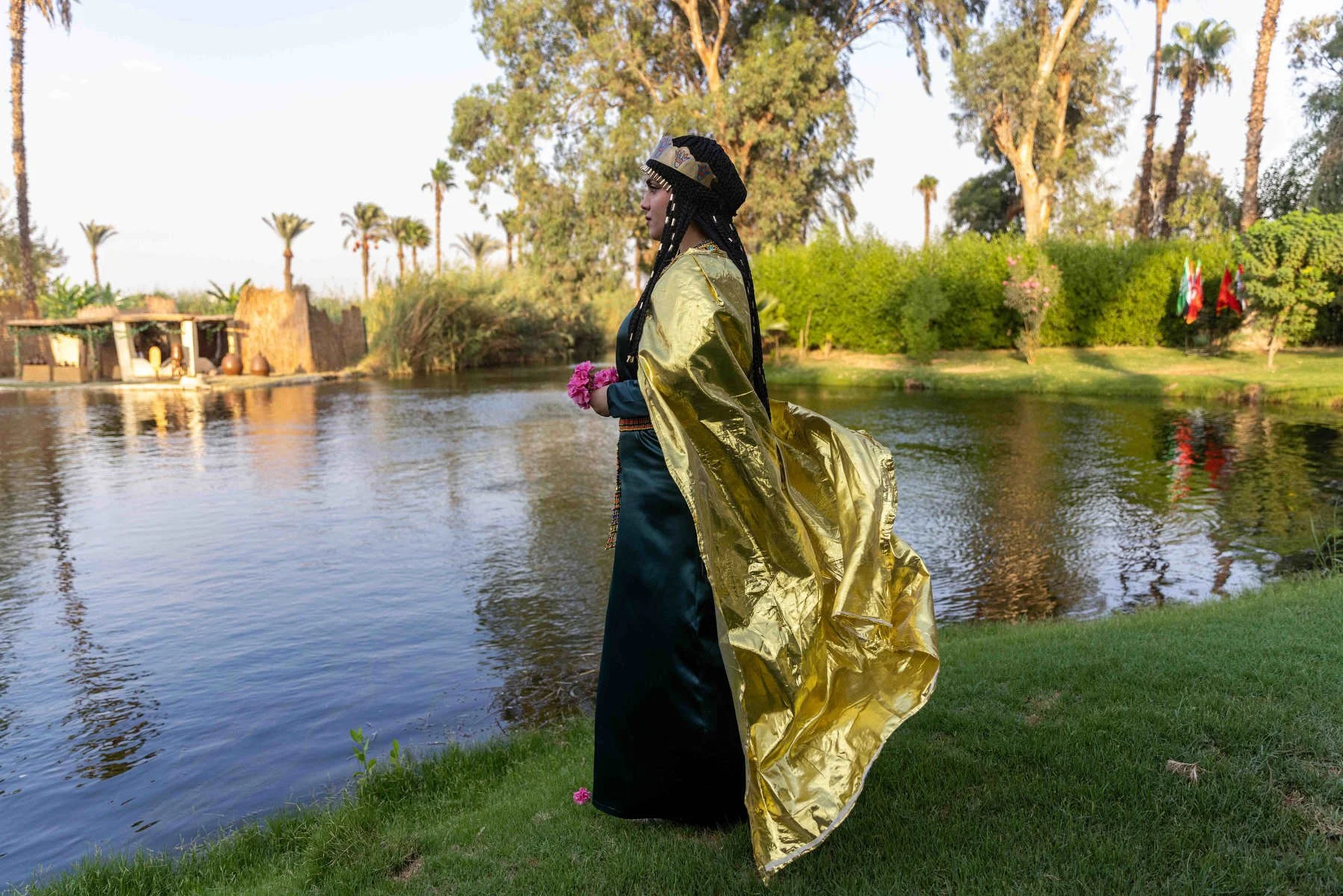
Qursaya Island
On Qursaya Island, a small but resilient fishing community continues to live and work along the Nile, even as fish stocks have declined dramatically in recent years. On the same island is the VeryNile Initiative, which partners with local fishermen to collect plastic waste from the river in exchange for income, an environmental effort born out of necessity.
As part of my search into the myth of the Bride of the Nile, I met two fishermen from the island: Arafa and Saber. Arafa is one of the leading figures in the VeryNile initiative, dedicating most of his time to removing plastic from the water. Saber, on the other hand, practices one of the Nile’s oldest and rarest fishing techniques: diving deep into the river at night to catch fish with his bare hands, especially during winter when specific species gather in known spots.
While their methods and roles differ, both Arafa and Saber shared their reflections on the myth of the Bride of the Nile, offering contrasting perspectives about it.
“I heard there used to be a Bride of the Nile in ancient Egypt, Even in the Pharaonic Village, I remember they used to hold a celebration every year. Sometimes they would throw a wooden figure into the water, or even one of the performers, someone I actually knew. Most of the time, we couldn’t get close when it was happening.”
“Many people believe there’s a Bride of the Nile, But I’m telling you, there’s no Bride of the Nile. We are the real mavericks of the Nile. We’re the ones who live in it, day and night. So if anyone deserves to be called the Bride of the Nile, it’s us”
Myth vs. Reality
The story of the Bride of the Nile still remains in Egypt’s collective memory, though many from the new generations don’t fully know about it. It shows how Egyptians have long held the Nile as sacred.
However, there is no evidence in ancient Egyptian manuscripts, temples, or historical records to support the idea of human sacrifice to the Nile.
Egyptian folklorist Ni'mat Ahmed Fouad, in her book The Nile in Folklore, also denies the myth, citing egyptologists who find no such practice in Pharaonic times. She suggests the story may have been misinterpreted from ancient texts like the Harris Papyrus, which mentions offerings to Hapi, the Nile god, but not involving humans.
In his paper The Bride of the Nile: An Orientalist Myth, Mogg Morgan notes that early Islamic sources suggest the ritual was revived by the Coptic community during years of poor Nile flooding. The scholar Ebers describes a symbolic act in which a mud figure, called "the bride" was thrown into the river, said to represent an ancient substitute for a virgin once sacrificed to appease the Nile.
After the founding of Fustat, when the Nile failed to rise, the Copts reportedly asked Governor Amr Ibn Al-As to allow a human sacrifice. He refused and consulted Caliph Omar, who sent a letter addressed to the Nile, asking it to rise if it obeys God's will. The next day, the river reached the needed level.
While this story is widely seen as legend, it illustrates how symbolic offerings, rather than human sacrifice persisted. Historian Al-Maqrizi records that in the 14th century, Christians threw a reliquary containing a saint's finger into the Nile to ensure a good flood.
By W Gentz, taken from Eber's (Aegypten in Bild und Wort (Picturesque Egypt) (1878)
